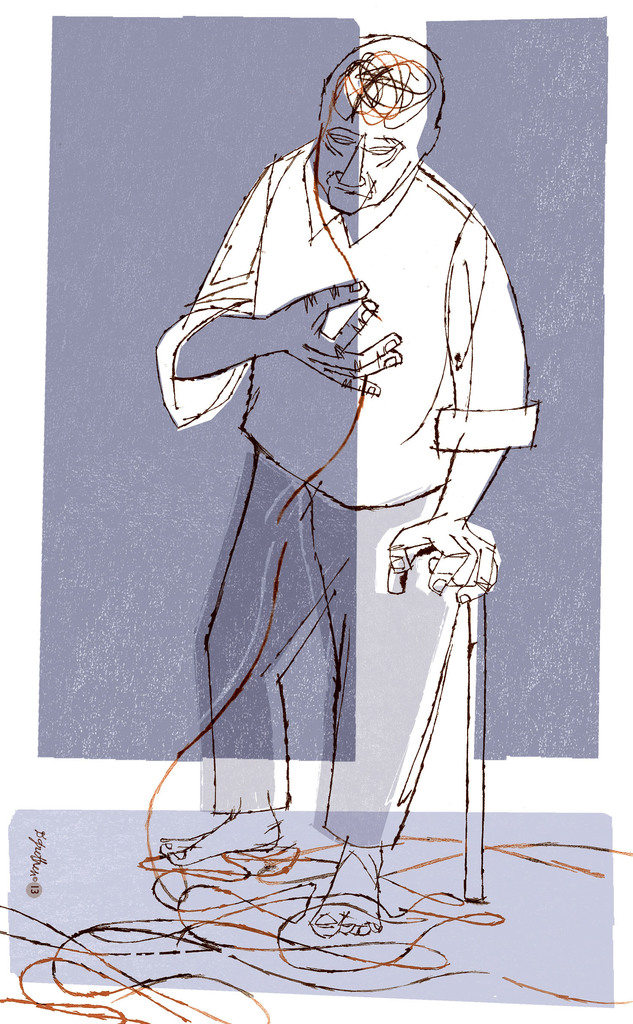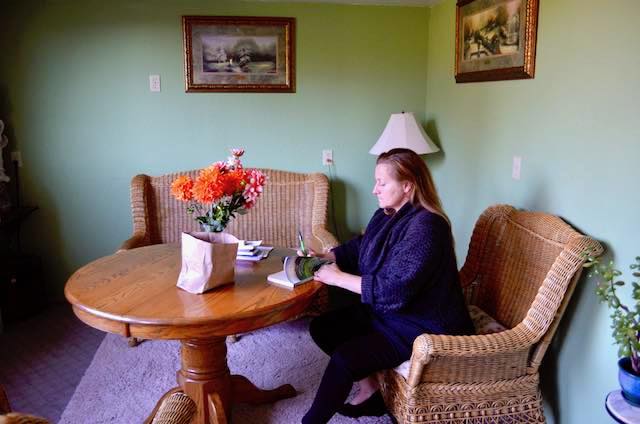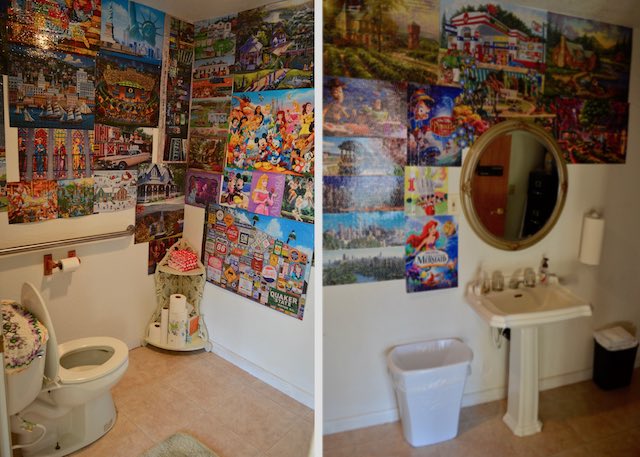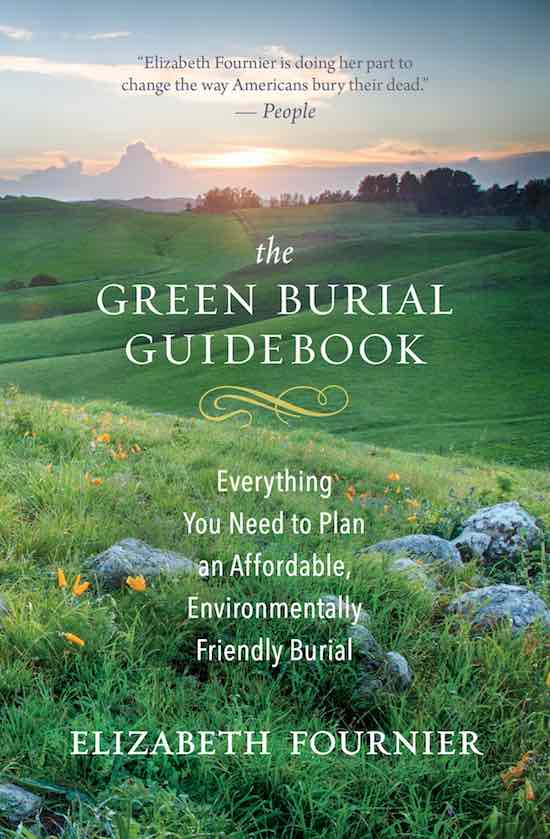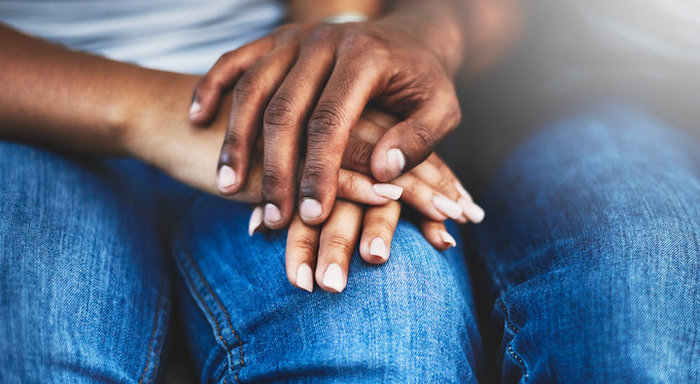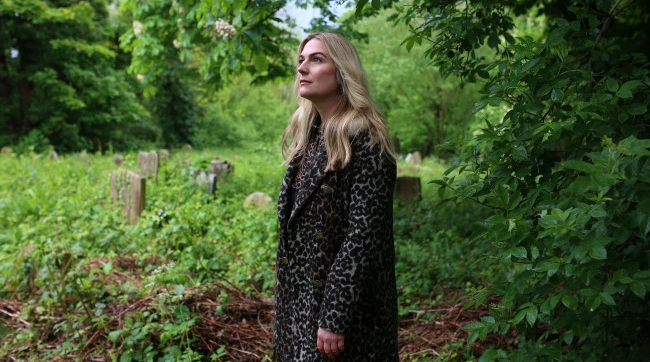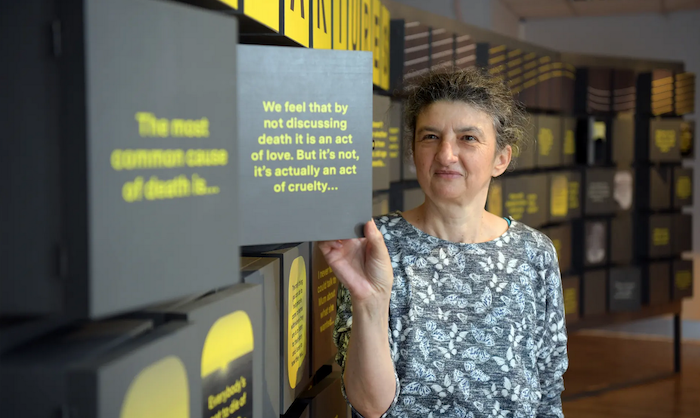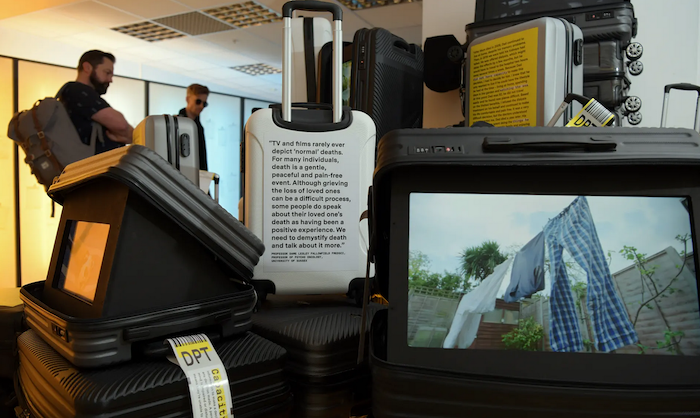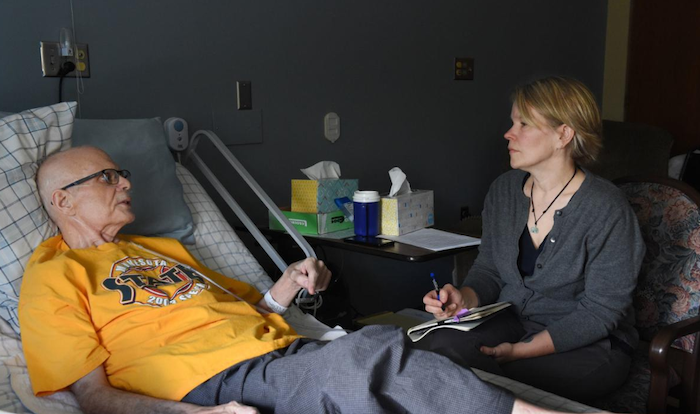
By BOB SHAW
In the dimly lit room, Mark Quinlan struggles to be heard.
His voice box has been silenced by his thyroid cancer. He tries to whisper, but the hum of his oxygen machine drowns out the sound. The voice of the bone-thin 67-year-old barely carries to the edge of his hospice bed.
But Christy Marek is listening.
Marek, an end-of-life assistant called a death doula, leans forward to catch every word. She asks him about funerals, the afterlife and memories of happier times.
“Do you want last rites?” she asks.
The whisper: “I suppose.”
She has been with him for months, in a hospital, transitional care unit and a hospice. Every step of the way, she has guided him through a dark and scary wilderness.
In many cases, death doulas are redefining how people approach death. They are breaking away from traditional generic funerals, and pioneering approaches to grieving, memory and death.
“Death is being reimagined at this moment,” said Anne Murphy, owner of the death-consultation business A Thousand Hands.
In the past, doulas were women working as midwives to help the process of birth. “Death doula” is a term for people who help with the other end of life. They also call themselves celebrants or soul midwives.
“They all do the same thing — companioning for people dying,” said Jane Whitlock, a St. Paul death doula.
The National Doulagivers Institute reports that its training has quadrupled in two years. President Suzanne O’Brien said she has now trained 402 certified doulas in a six-month course. The cost is $997, Twin Cities Pioneer Press reported.
“I just got back from a month of training in Thailand,” O’Brien said in April. “This is needed around the world.”
Doulas-to-be are drawn to a job that that pays up to $100 an hour in Minnesota. The trainers are proliferating, with names like Doulagivers, Lifespan Doulas, Soul Passages and the National End of Life Doula Alliance.
The traveling doula schools are arriving in Minnesota.
One session starting May 31 offers a three-day program by the International End of Life Doula Association for $750. Or you could get training from the Conscious Dying Institute, which is offering three-day classes starting June 22 and September 26, for $2,995 and $1,895, respectively.
The inconsistency makes some uncomfortable.
“I look at the programs where you get certified after a weekend. It is not doing the people you work with justice,” Marek said.
“It is frankly a little bit messy.”
Doulas sometimes overlap the services of a hospice — causing some friction.
“Hospices frankly do not know what to do with the end-of-life doula role,” Marek said.
Susan Marschalk, director of the Minnesota Network of Hospice and Palliative Care, said they do not compete but must learn to work together.
“Doulas are newer, and there is some trepidation about them,” Marschalk said. She said hospices provide medical care and emotional support for dying people.
Doulas are flexible, hired by the hour. They can be employed before or after the dying process begins, helping with funerals and commemorations.
The training for death doulas is sketchy.
It’s a new vocation, with no regulations or standards. With no training whatsoever, anyone can start working as a death doula.
Sometimes they are hired months before a death, and work for months afterward. Some are called at the last minute and may help only in a person’s final hours.
“This is so new. We are all finding our way,” said Marek, of Lakeville, owner of Tending Life at the Threshold.
Being a doula is not a full-time career — yet.
“Right now there are no full-time death doulas,” said doula Whitlock. But she predicts that as baby boomers age, the demand will increase along with the number of deaths.
Doulas seeking full-time work sometimes branch out into related areas — paperwork, aging in place, consulting, or doula services for pets.
“Dying people want to put things in order,” she said. She helped a woman arrange for her ashes to be dropped into the Mississippi River from a pedestrian bridge.
Death doulas encourage doing whatever is meaningful — which can often mean breaking the rules.
For example, one dying man recently requested a wedding and an end-of-life celebration — in the same service. He was engaged, said doula Murphy, and saw the dual-purpose ceremony as meaningful.
What was meaningful at Susan Showalter’s funeral was utterly original.
Showalter, 71, of St. Paul, died in December of diabetes complications. End-of-life adviser Murphy suggested a home vigil, displaying the body for visitors to see.
About 175 mourners were served white wine and Doritos — Showalter’s happy-hour treat.
Respecting an ancient ceremony, they washed the body with washcloths and pans of water. They anointed her with oil, dabbing it on her face and hands.
The group spontaneously sprinkled rose petals to make a pathway between the body and the funeral-home van.
Once the body was gone, they shaped the petals on a table into an outline of her body. Where her feet had been, someone placed hockey socks — which she wore when her feet were cold.
The personal touches enriched the process, said her husband, David.
“This allowed us to be in charge,” he said. “We were participants, not just observers.”
“I swear at least 20 people thanked me for such a wonderful way to say goodbye.”
At other times, death doulas help celebrate the lives of the deceased — before and after they die.
On May 10, Marek hovered at the bedside of cancer victim Quinlan in Our Lady of Peace hospice in St. Paul.
She reminded him of the impact he had on his students, from 40 years of teaching at Centennial High School in Circle Pines.
One of them — Chris Roskowinski — flew from his home in Sherman Oaks, California, when he learned that Quinlan was dying.
The night before, he was taken to the opening-night play at the high school, which he had helped direct until the cancer left him incapacitated. The cast and the audience honored Quinlan — which made the occasion both happy and sad.
“Tell me, did that make it easier for you?” Marek asked. “Harder?”
After a pause, a raspy whisper rose from the bed: “Easier.” The word seemed to hang in the air.
At his bedside, Roskowinski could barely hear Quinlan speak, but nodded appreciatively.
“She can be his voice,” he said.
Complete Article ↪HERE↩!

